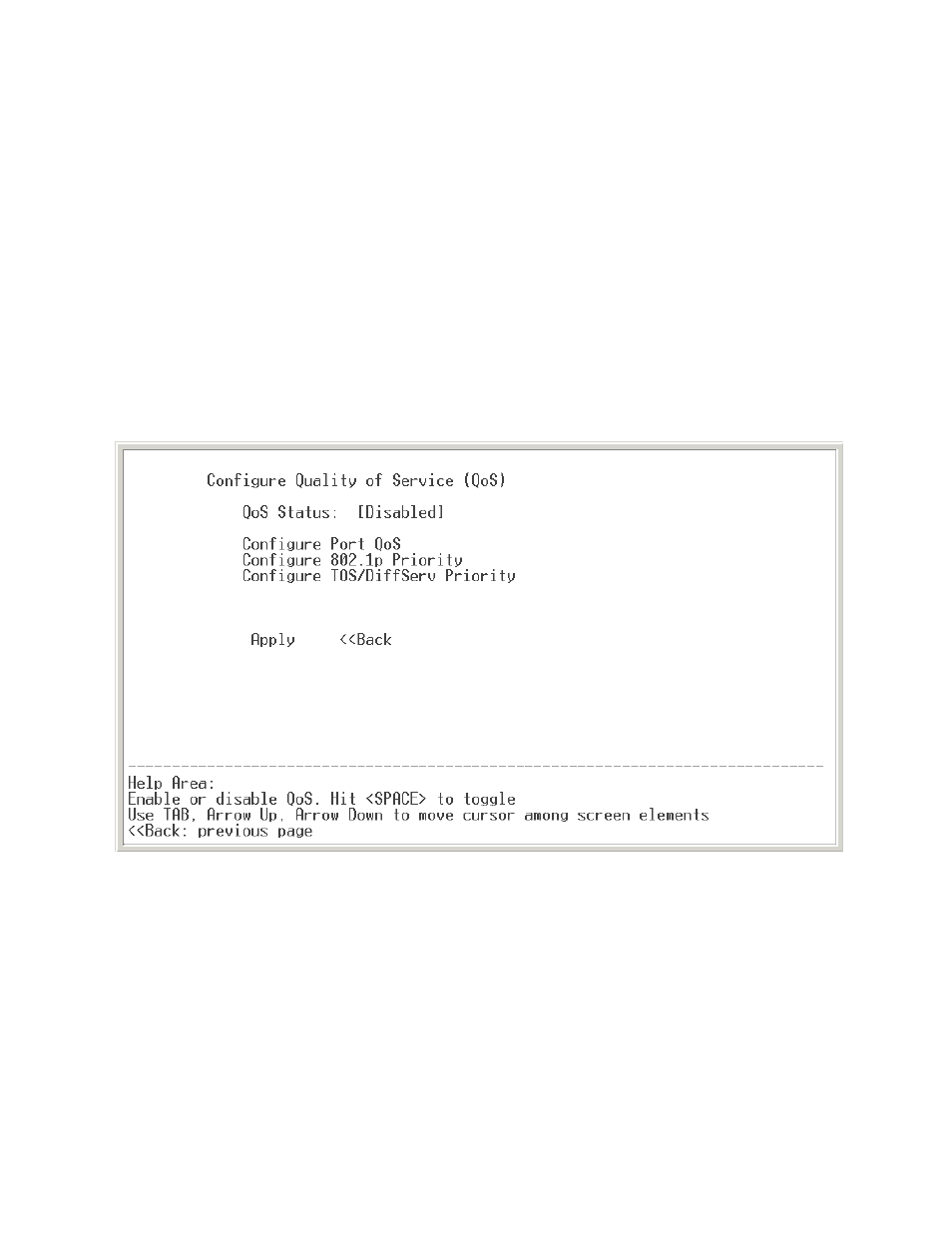7 configure qos (quality of service), On 4.2.1.7) – Contemporary Control Systems Compact Managed Switches Software Manual for Console Access User Manual
Page 27

TD020850-0MG
27
4.3.7 Configure QoS (Quality of Service)
In addition to the MAC-based priority applied in multicast filtering and static forwarding,
the switch can assign other types of priority to its traffic to achieve various levels in what
is known as Quality of Service (QoS). It can do this regardless of frame content (Port
QoS) or by examining the content of every frame received by a port and assigning
priority based on the port of origin. The default screen displayed in Figure 19 shows
that
QoS Status must be enabled before any (or all) of these methods can be applied.
Below the
QoS Status line, there are links to three configuration subscreens — one for
each type of QoS. Once QoS is enabled, the individual ports can be configured by
selecting the menu item
:
Configure Port QoS
(explained in Section 4.2.1.7.1)
Configure 802.1p Priority
(explained in Section 4.2.1.7.2)
Configure TOS/DiffServ Priority
(explained in Section 4.2.1.7.3)
Figure 19 — Configure Quality of Service (QoS)
Although not recommended, all types of priority can be active simultaneously — giving
rise to conflicts. The following hierarchy shows how these conflicts are resolved:
1. If Port QoS is enabled, apply its rules — otherwise,
2. If TOS/DiffServ Priority is enabled, apply its rules — otherwise,
3. If 802.1p Priority is enabled, apply its rules — otherwise,
4. Apply the MAC-based priority used in multicast filtering and static forwarding.
